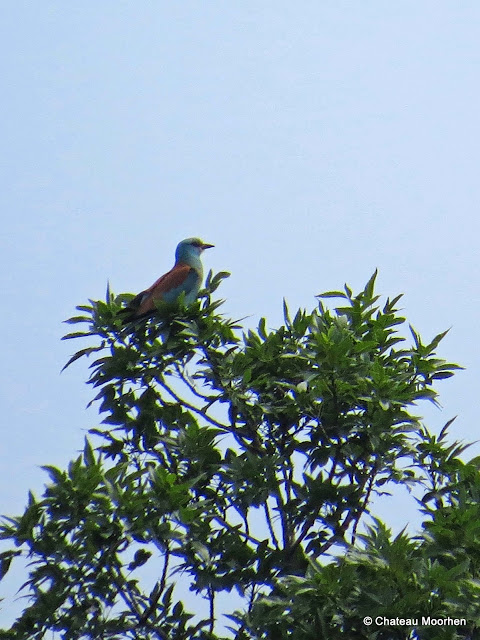First up, it was time for my straggly old Rosemary to have a haircut. This photo doesn't show it looking at its worst but I did want to show at least one photo of the front garden looking reasonable...... ;-)
 |
| Back in May when the Aquilegias were at their best - the Rosemary is the straggly thing flowering right at the back behind the fluffy Bronze Fennel |
 |
| Errrrm, a haircut? Where did it go? |
 |
| Ooops. |
Well it needed it, yes really. And under all that mess where it had rooted into the gravel, I found two new plants of a reasonable, about 18" tall, size. Also two walnut trees, more chives and lord knows what else. Most of which have to come out but if it's something that hasn't flowered yet it has had a reprieve. I haven't completely butchered the rosemary as it actually has some fresh growth right down back into the thick woody stems. I must add that this was one of the nicest smelling garden jobs ever, even better than pruning lavender!
 |
| We'll see if it can come back to life and form a reasonable shape after this major haircut! |
In the following photo, although you can't see because I never took a before photo (because I hadn't realised before that I was going to go slash, hack and chop crazy), I have chopped off the 3-4 foot long new growth from the honeysuckle on the wall, lifted the canopy of the purple Prunus a bit (which is finally growing into something actually resembling a tree, at long last), pruned back about half as much again on that ivy covered tree stump, and finally, for the first time ever, pruned the Eleagnus into something resembling a shape. That's the shrub on the left. As you can see by the pile of jackets on the ground, I didn't start off warm, but I ended up pretty hot!
 |
| Sometimes I do some work in the garden :-) |
 |
| Although mostly shade lovers in here, they are happy to have some light again! |
Then there was the weeding. And edging. I expected the grass to grow, but the weeds have been worse than normal this year because I mulched everything non veggy with our best home made compost. Unfortunately that's full of weed seeds.
 |
| Somewhere in here there are plants that are not weeds. |
 |
| I allowed the red poppy to stay! |
 |
| In fact this border has become twice as wide, because there are flowers on the other side of the fence in the veg patch now. On purpose! |
I've often got shrubs that need a home, but I don't know where to put them! Here we had a brainwave to try to screen off some more of the hideous propane tank. I know the shrub in the background looks like a dead twig, but it does actually have some leaves and is a kind of Lonicera which my parents in law grew from a cutting for us. It will grow enormous and have to be kept under control, and is very highly perfumed. I've forgotten what it's called offhand. I have another one too and don't know where to put that one! In the front is a variegated Dogwood (Cornus (probably) alba), another cutting that came from a friend's garden. I've got to really stop this taking cuttings business!
 |
| One day they will screen the tank a bit! |
Harvest time - first of all the Elderflowers are putting on a magnificent display this year, and have been flowering for several weeks now. I've made two lots of Elderflower cordial, and there'll be loads of berries in the autumn for the birds, and for me should I want to make any jelly or cordial.
 |
| I have a couple of trees beside the stream in the orchard. Elders don't get planted, they just appear, thanks to bird droppings! |
 |
| They have really pretty flowers |
Strawberries have been fantastic and whilst they are coming towards the end there are still plenty more to pick! I've made two batches of jam and given some fresh strawbs away, and we've been eating them twice a day for a couple of weeks now. They have really appreciated the cooler weather. Recipes for Elderflower Cordial and Strawberry Conserve posted last year here.
 |
| Yikes. Strawberries. Lots of. |
This isn't really a veg patch update per se, but when you've just spend hours hand weeding in amongst your Alliums, can you blame yourself for wanting to post a photo of it looking pristine, for that five minutes that it lasts?
Which leads me to.......
 |
| Hoorah! At last, our first new Potatoes (Belle de Fontenay). And more strawberries! |
And now I've just noticed that the Raspberries are starting to be ready to pick. Help! :-)




































